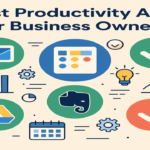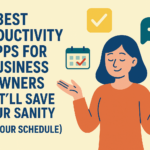In my work as a Leadership and Career Coach for high-performing women leaders, the most common reason my clients seek out coaching is to build their overall leadership confidence. The key to developing more confidence is by becoming an authentic leader because when you act in accordance with your personal truth, values, and beliefs you will naturally lead with ease and clarity. Authentic and confident leaders are in tune with their intuition, which allows them to make better decisions, solve complex problems, and find innovative solutions to challenges quickly. When you remain in touch with your intuition and who you are, this confidence will carry you through even the most challenging of times.
So, how can you develop yourself into a confident and authentic leader? I have cultivated the following 3-steps from my experience as both a researcher and a leadership coach for high-performing female leaders. Without these foundational strategies it will be very difficult to have the confidence to adequately grow other key leadership skills such as the Ability to Influence Others, Negotiation Skills, Giving and Receiving Feedback, and Priority Management (to name just a few).
Step 1: Build Your Resilience
Resilience is the capacity to recover quickly from difficulties. To be resilient is to possess a blend of toughness and elasticity. The #1 most important tool that will help you overcome leadership challenges and professional setbacks is your ability to be resilient. Research indicates that creating a resiliency-building routine prevents depression, anxiety, stress, and burn-out. By building your resilience, you nurture and take care of yourself, so you can be fully present for the others in your life that rely on you such as your team, your clients, your children, your partner, or your friends.
Step 2: Identify Your Emotional Triggers and Be Able to Thoughtfully Respond (Rather than React) to Them
Emotional triggers are stimuli received from external circumstances such as the words or opinions of others, events, or situations. These triggers provoke an instant and intense emotional reaction in the receiver that can be difficult to control.
By increasing your self-awareness around your triggers, you can learn to regulate them so that you can respond thoughtfully to the external world, triggered or not. When you increase your self-awareness and self-regulation around your emotional triggers, you will be open to receive important feedback from others. People will not be afraid to give you constructive feedback because they will not fear your reaction. Cultivating the ability to choose purposeful responses as opposed to immediate, often impulsive reactions, exudes leadership stability and confidence. Ask yourself– What situations or relationships could be improved in my life with more trigger awareness and regulation?
Step 3: Setting and Maintaining Boundaries
Boundaries are guidelines, rules, or limits that identify reasonable, safe, and permissible methods for others to behave towards you. They delineate how you will respond when those boundaries are crossed.
As a leader, your most powerful tool is your intuition. Setting and maintaining boundaries will allow you to consistently act in accordance with your intuition. When you set boundaries, you will let-go of the people pleasing mindset. The people pleasing mindset is the most common road block for developing confidence as an authentic leader. Additionally, setting clear boundaries prevents stress and burn-out.
Research indicates that it’s EQ, not IQ that is the greater predictor of leadership success. If you can first develop the leadership foundation described here and increase your confidence and EQ, then you have the capacity to focus and fully develop the other important leadership skills. For more tips on developing these 3 leadership confidence building blocks, download my Free Leadership Guide:3 Steps to Becoming a Confident Leader.












